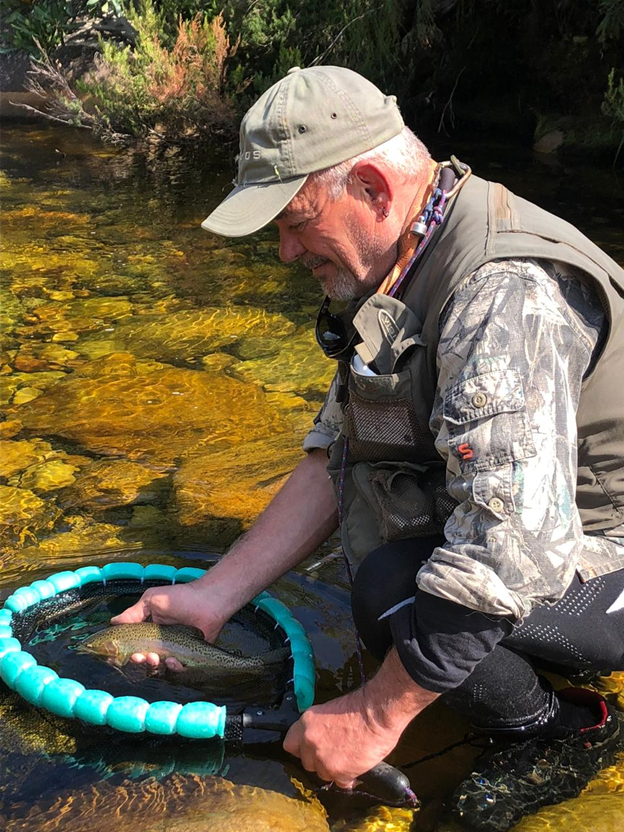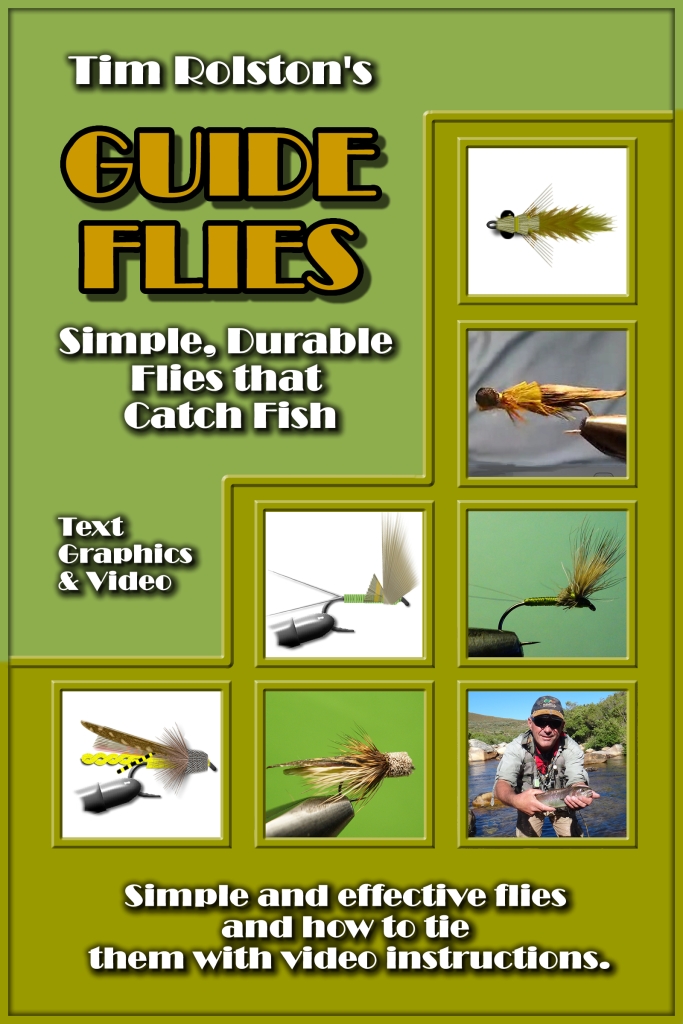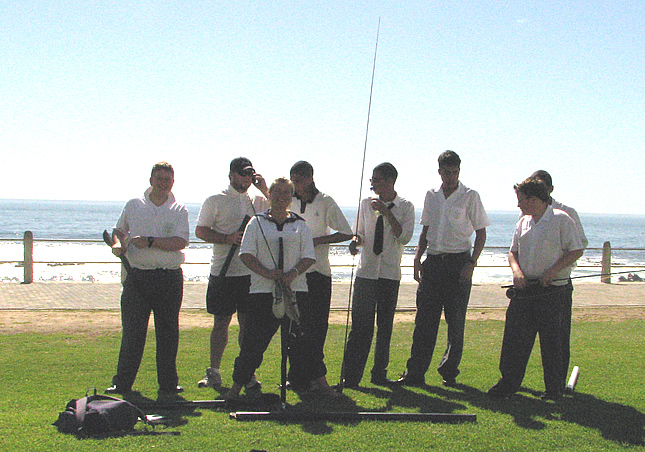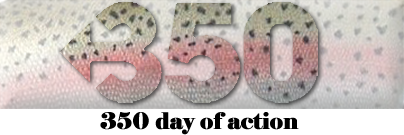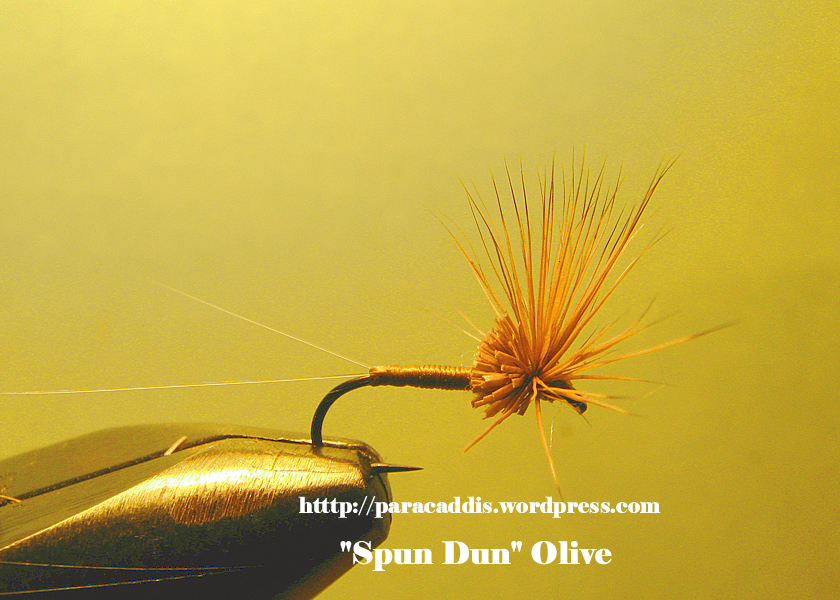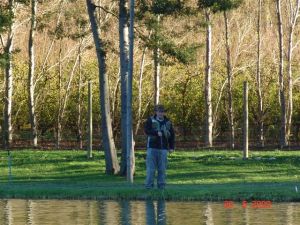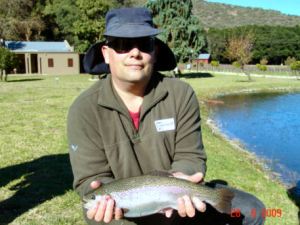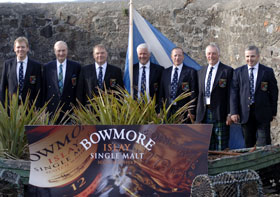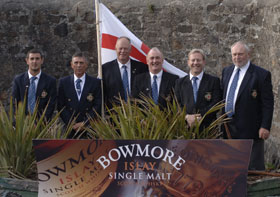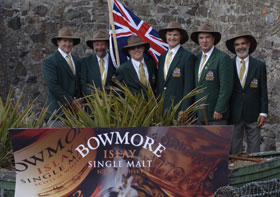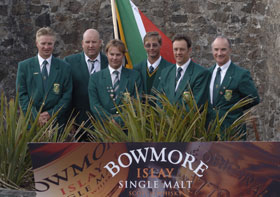
A problem with Fluorocarbon?
I have for some time, years at least, had nagging little questions about the efficacy of fluorocarbon tippet material for trout fishing. Sure I have seen the “invisible in water” marketing stuff and like many competitive anglers have taken as read the idea that the stuff is superior in the invisibility stakes, but does it really offer a panacea for the angler?
I don’t use it at all on moving water, for dry fly work I personally believe that it is thicker than copolymer for the same breaking strain and on top of that a good deal less flexible. I am of the opinion then that flexibility and fine diameter make for better fly presentation and on that front the copolymer comes out on top of any reasonable analysis. Don’t for one moment believe that fluoro’ breaks through the surface film more easily than mono, I wish it did but it doesn’t, no matter the slight advantage that its specific gravity apparently holds.
For nymphing tactics on rivers and streams the thicker diameter of fluorocarbon would apparently negate its improved sinking properties providing additional drag (and that only after it has been pulled through the surface film by a tungsten bead), thereby reducing sink rates and I again prefer to use copolymer or mono, the current favourite (in a class of its own as far as I am concerned) is Stroft for virtually all my stream fishing applications.
In my own mind I then have absolutely no issue with leaving the fluoro at home when headed to the river. Even with micro flies and crystal clear waters the supposedly high visibility of the tippet doesn’t seem to detract from the allure of the flies I use and I can’t see any subjective evidence that the fish take much notice but I have still been persuaded to stick to fluorocarbon in stillwater environments and I am not sure that I should.

Using Fluoro when lake fishing has become a universal standard, but does it make sense?
A recent survey of game changing innovation in Trout Fishing Magazine in the UK (an unashamedly stillwater biased publication) had at least one expert claiming that fluorocarbon was a breakthrough of unprecedented proportion. When stillwater fishing I have for years opted for fluorocarbon because that is the accepted norm but does it make sense? I have swallowed the damnable cost of the stuff in the belief that I would fool more fish with this as the terminal tackle than I might have with Mono, but truth be told I am no longer so sure.
I used to do a great deal of bank based fly fishing in large stillwaters using mono quite confidently without apparent mishap. Who knows if I would have caught more fish on fluro’? I don’t and I am not sure that anyone else would be able to assuredly lay claim to being certain of its advantages either for that matter.
I fish fluorocarbon because everyone else does; in a competitive environment it is hard to turn ones back on the crowd. A sort of “if you can’t beat then join them” mentality which isn’t part of my normal psyche. Usually I steer away from the crowd mentality, make up my own mind and do my own thing but with this fluoro’ v mono argument I have to confess to being entirely unsure.
As with much else, flyfishing is filled with compromise, from the length of the rod to the taper of the leader, nothing is perfect and is it reasonable to assume that things would be different when it comes to the line to which you tie the fly?
Let us for the present assume that the fluorocarbon lines provide some level of advantage in terms of fooling the fish. Certainly saltwater anglers targeting such species as Tuna on bait will tell you that the differences in hook ups are quite spectacular if you stick to a fluoro’ tippet, but then again they are using tremendously heavy duty stuff and the benefits of apparent clarity might well count for more in such circumstances. For trout style leaders I am far from persuaded on that visibility front but even were that the case what are the drawbacks?
Fluorocarbon seems to be notoriously tricky stuff, with a supposed long shelf life I have frequently been stuck with a spool of the material which seems to break like cotton, old or poorly stored I don’t know, there aren’t “sell by dates” on the spools and even brand new it has the considerable disadvantage of losing a great deal of its inherent strength when knotted. Any knot, and I have tried a good many of them, drops the breaking strain considerably. This may well be why so many UK based stillwater anglers use 10 and even 12lb nylon to catch fish averaging a pound or two.
At one time I thought that I had “found” a wonderfully cost effective solution with Berkley “Vanish” much loved by bass anglers but I simply couldn’t tie the stuff together without it breaking. In the interim I have tried Airflo G3, Rio, Stroft fluoro’, Riverge, Fulling Mill, and others and none of them seem to be particularly reliable. The problem lies with the knot strength and a propensity to “pop” under sudden shock. Short lengths, particularly droppers on multi-fly rigs, have a nasty tendency to give up the ghost at a critical moment when one finally gets a take.

With considerable dilligence I wasn’t able to join this stuff without breakage, no matter the knot used.
Add to that the move towards “none stretch fly lines” and the situation becomes all the more fraught. These lines, such as the Airflo “Sixth Sense” series are so sensitive that you can feel a fish break wind underwater anywhere near the line and they have to offer considerable advantages to take detection and hook setting but they offer no protection whatsoever with regard to cushioning the sudden take of a fish.
On a recent trip to the UK, predominantly practising for the Commonwealth Flyfishing Championships the entire team had issues with breaking off fluorocarbon leaders and it appeared all the more apparent when fishing none stretch lines and specifically none stretch floating lines. I imagine that sunken lines, despite their “density compensation structures” are always in some sort of curve underwater and as a result offer some cushioning on the take, but the floaters give absolute and immediate direct contact, great for feeling the take but hopeless in terms of softening the blow of an unexpected fish.
One could of course build in some additional stretch, perhaps “Power Gum” which is both outlawed in competition and impractical to boot or a twisted loop structure shown to me by Tasmanian guiding Ace, Peter Hayes, which is equally against the regulations controlling loop size so those options are out for all but the dedicated recreational angler. Keeping the rod at an angle to the retrieve is a good idea to be sure, but a problematic one all the same and frequently forgotten in the heat of battle. But it does strike me that much of this is trying to find a solution to fit a problem that quite possibly need not be there in the first place. It seems entirely possible that fluorocarbon tippet simply isn’t up to the job and for all the marketing hype it begs the question, are we coughing up far too much money for something that effectively doesn’t work?
My current thoughts are along the following lines, although I have to admit not cast in stone:
1) I have caught numerous fish in both still and moving water using mono or copolymer leader and tippet so obviously not all, or perhaps even not most, fish give a monkey’s about the slight issue of visibility.
2) I generally fish with leaders or tippets with a breaking strain well below the weight of the fish I expect to target so why should I fish fluoro’ which should in theory be able to lift a bag full of fish just to avoid breaking off?
3) If I have to use material that is considerably thicker, stronger or both to avoid breakoffs than I would when using mono wouldn’t it seem reasonable to assume that the thinner mono might outweigh, at least in part, the supposed advantages of low visibility of fluoro’?
4) Even if I deceived 20% more fish with fluoro’ (a totally arbitrary percentage dreamed up for the sake of argument) but lost 30% of those fish due to the leader / tippet failing wouldn’t I be better off sticking to the mono or copolymer?
5) From a purely financial perspective wouldn’t I be paying a lot more than I need to for my terminal tackle, particularly if it appears to be a lot less reliable in the first place?
6) In moving water I go to some trouble to insure protection of the tippet, with soft rods and boiled leaders to provide cushioning but in lakes, with the stiffer action tackle and non-stretch lines I am already removing much of that protection and then still add in a leader made up of material which is notoriously sensitive to sudden shock. I am beginning to think that this doesn’t make any sense.

I am going back to basics, time will tell if it proves to be a good move.
Down here in the Western Cape of South Africa winter is upon us and winter is stillwater season, the rivers are either in flood or closed to angling; mostly both, and that leaves boat fishing on lakes and reservoirs as the primary providers of my angling fix for the next few months. I shan’t be involved in any competitions and as such am freed up to experiment without consideration of the rules or indeed what anyone else is up to. With that and the above in mind I plan to stick to fishing mono or copolymer this season and shall see if it makes any significant difference when I catch rates are held up to my boat partner’s. It isn’t impossible that they hook more fish than I do, or for that matter even land more than I do, which isn’t exactly the same thing. But until I see some serious evidence that I am disadvantaging myself by leaving the fluoro’ at home I think I shall stick to avoiding it. I have a very nasty suspicion that we have had the wool pulled over our eyes and that for a nominal, if scientifically proven, advantage of water-like refractive properties we might be paying too high a price, both in terms of hard earned cash and lost fish and frustration as well.
For another detailed look at fishing nylon I can recommend the following link from Fly Fishing America http://www.flyfishamerica.com/content/fluorocarbon-vs-nylon the piece goes into considerable detail and suggests the opposite to my thoughts. Apparently the author Bill Battles, swears when he breaks off fish and swears less when using fluorocarbon. I wish that had been the case over the past month in the UK but most of us over there fishing were swearing fit to bust and almost all of the expletives were a direct result of failing fluorocarbon leaders under moderate pressure at best. It also strikes me that many of the proponents of the benefits of fluorocarbon, as with the above reference, refer a great deal to saltwater applications where one supposes that the refractive index of saltwater is different to fresh and that the basic terminal gear is a good deal stronger in first place. If I don’t catch any fish over the winter and get an ass kicking from my fluorocarbon wielding boat partner then I may have to swallow some humble pie come spring. But then there is the possibility that I might just find that I have been less frustrated by breakoffs and find a bit more cash left in my pocket too. We shall see.
 You will find more writings by the author of this blog on http://www.inkwaziflyfishing.co.za covering a variety of fly fishing topics from building your own lanyard to tying better flies.
You will find more writings by the author of this blog on http://www.inkwaziflyfishing.co.za covering a variety of fly fishing topics from building your own lanyard to tying better flies.
Comments are always welcome on this blog and I would be interested to hear other people’s thoughts on the battle between fluorocarbon and mono, my mind is yet to be made up but I do wonder if we aren’t all just following the marketing hype without due consideration of what goes on out fishing instead of just in the laboratory.

